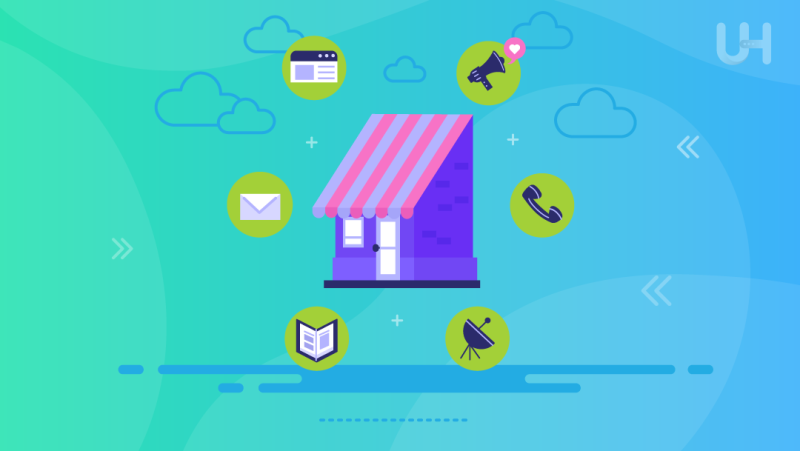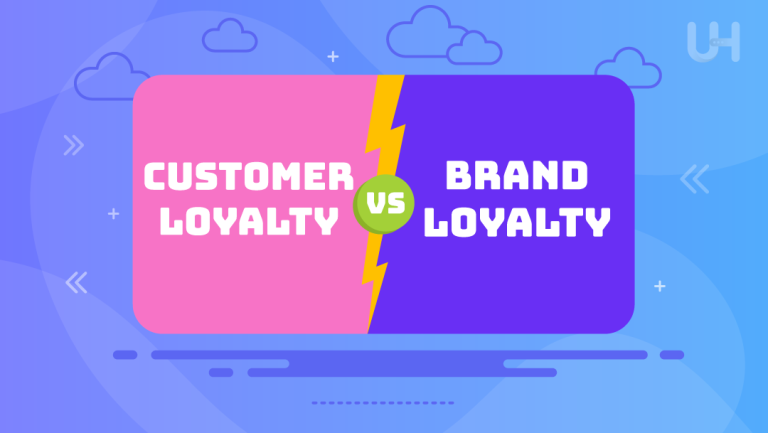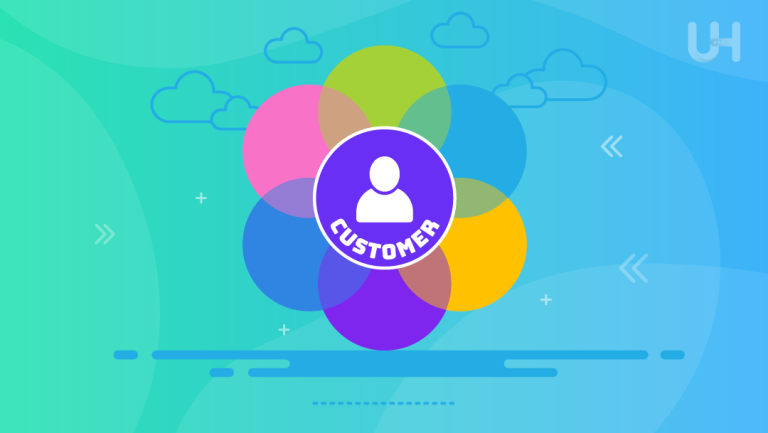In today’s retail business, being where your customers are is everything. And they are EVERYWHERE – online, in-store, on their phones, you name it. But the real question is how do you keep up with them? Simple – embrace omnichannel retailing to meet your customers wherever they are.
But what exactly does it mean and why does it matter? That is exactly what we are going to explore in this article. We will break down what omnichannel retailing is and how it can benefit your business. We will also share best practices on how you can implement the omnichannel strategy in your business.
What Is Omnichannel Retailing?
Omnichannel retailing is a strategy that focuses on providing a seamless shopping experience across multiple channels. These channels can include physical stores, online stores, mobile apps, social media, and more.
The goal of omnichannel retailing is to make it easy for your customers to shop and interact with your products. Regardless of whether they are using a desktop or mobile device, they should get a consistent customer experience.
So how does omnichannel retailing work?
Let’s understand it with an example of a dietary supplement store. This example is especially useful for explaining omnichannel concepts because it deals with pharmaceutical-grade supplements. And these require a higher level of trust and expertise.
Customers have specific needs and preferences. So they may ask about ingredients, how to use them, or if they interact with other medicines. A well-planned omnichannel strategy helps you give the same helpful information and support on every platform. This builds trust and loyalty with your customers.
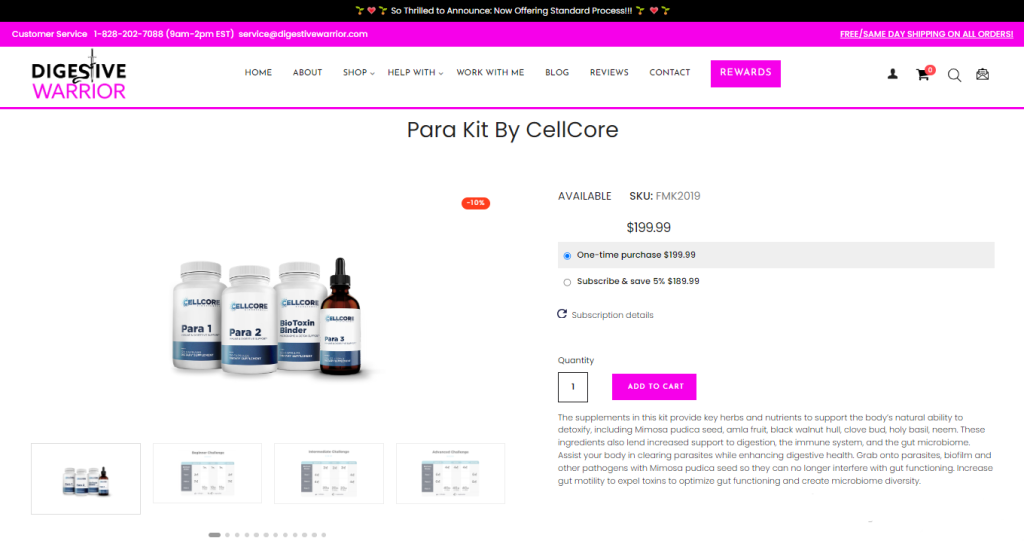
This company has a brick-and-mortar store where customers can come in for personalized consultations with trained staff. They also have a user-friendly online store and mobile app where customers can browse their products and read detailed descriptions.
Now, imagine a customer, let’s call her Sarah, who discovers this company through Instagram. She sees an ad for a new vitamin she is interested in trying. She clicks on the ad, reads more about the product on the website, and checks if they are available at the nearest brick-and-mortar location.
Later that week, she happens to pass by their store and decides to ask a few questions about the product. The staff recognizes her from her online account. They provide personalized recommendations based on her previous interactions.
She then goes back and purchases the best-suited supplement on the mobile app. All without any inconsistencies in pricing or product information.
Sarah enjoys a smooth omnichannel retail experience switching between online and offline shopping. This makes her feel valued and supported and boosts her satisfaction as a customer.
Omnichannel Retailing vs Multichannel Retailing: Understanding The Differences
Multichannel retailing and omnichannel retailing are somewhat related topics.
Multichannel retailing means selling products through various channels. These include physical stores, online stores, social media platforms, and maybe even through mail-order catalogs. Each channel operates independently, with its own inventory, pricing, and promotions. If you sell a product in your store and online, they might have different prices or promotions.
Omnichannel retailing is the upgraded version of multichannel. It provides a seamless and integrated shopping experience across all channels. So whether your customer walks into your store, browses your website, or engages with your brand on social media, they get a consistent experience. That means consistent pricing, promotions, and inventory across all channels.
In multichannel retailing, the focus is on having a presence in multiple places. But in omnichannel retailing, it is all about customer satisfaction – putting them at the center of everything you do.
Here’s a quick comparison of the major differences between the two:
| Omnichannel Retailing | Multichannel Retailing | |
| Focus | Customer-centric, focusing on providing a consistent experience across all channels. | Channel-centric with each channel operating somewhat independently. |
| Integration | High level of integration between channels. | Limited integration, causing siloed operations and data. |
| Customer Experience | Provides a seamless and consistent experience, regardless of the channel used. | Provides different experiences across channels, with less focus on consistency. |
| Channel Interaction | Channels are interconnected, customers can switch between them easily. | Channels operate independently, customers have to start fresh when switching channels. |
| Inventory Management | Often uses centralized inventory management. | Inventory management is decentralized which can cause discrepancies in stock levels. |
| Marketing Strategy | Uses personalized and targeted marketing strategies. | A customer sees different products or prices online versus in-store, with limited coordination between the 2. |
| Flexibility | More adaptable to changing customer shopping preferences and market trends. | Less adaptable because of channel-specific strategies and systems. |
Different Avenues Of Omnichannel Retailing
Let’s talk about the different avenues of omnichannel retailing. To keep things relatable, we will use the example of this golf cart accessories company.
Now whether you are running a multinational corporation or selling golf cart accessories, the principles of omnichannel retailing remain the same. But by focusing on a niche like this, we can truly see how effective omnichannel strategies can be, even for smaller or specialized businesses.
Brick-and-Mortar Stores
These are your physical shops where customers can walk in and buy golf cart accessories like steering wheels or seat covers. This could be a store in a golf club or a dedicated shop near golf courses. Here, employees can help customers find the right accessories and provide personalized recommendations.
eCommerce Websites
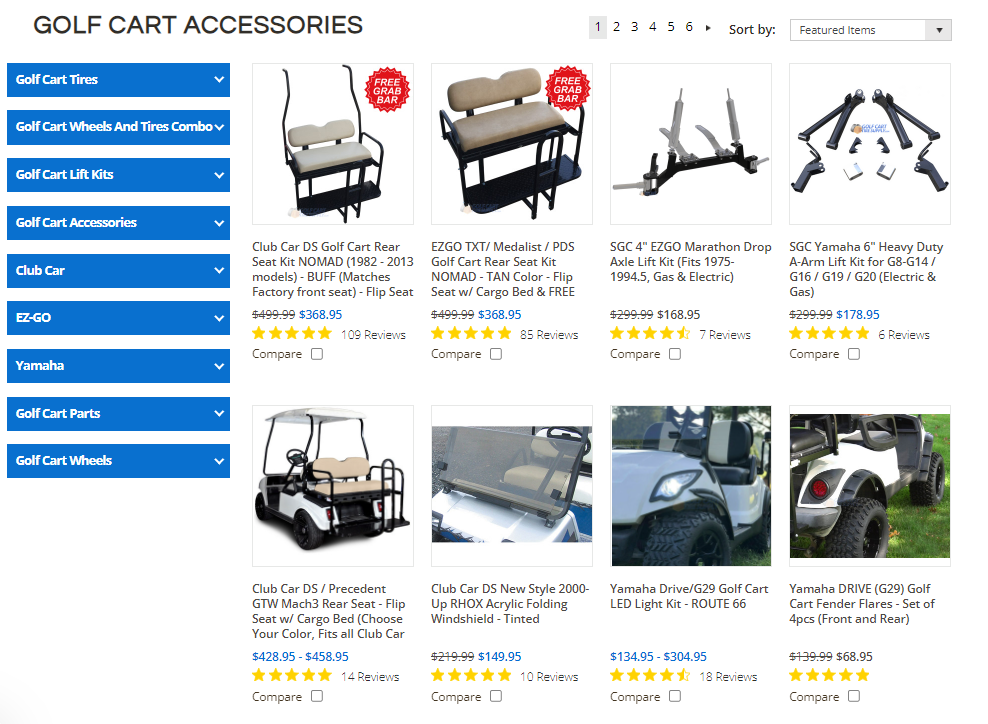
The company showcases all its golf accessories with detailed descriptions and images here. Customers can search for specific accessories, compare prices, and read reviews before purchasing. The website also has secure online payment options and handles shipping and returns.
Mobile Apps
With these apps, customers can conveniently shop for golf cart accessories on their smartphones or tablets. Exclusive deals, push notifications about new arrivals or promotions, and personalized product recommendations based on past purchases or browsing history are all part of it. Its customers can also track their orders and manage their accounts through the app. AI in golf apps also became popular as it’s allowed to improve skills and gives new experience virtually.
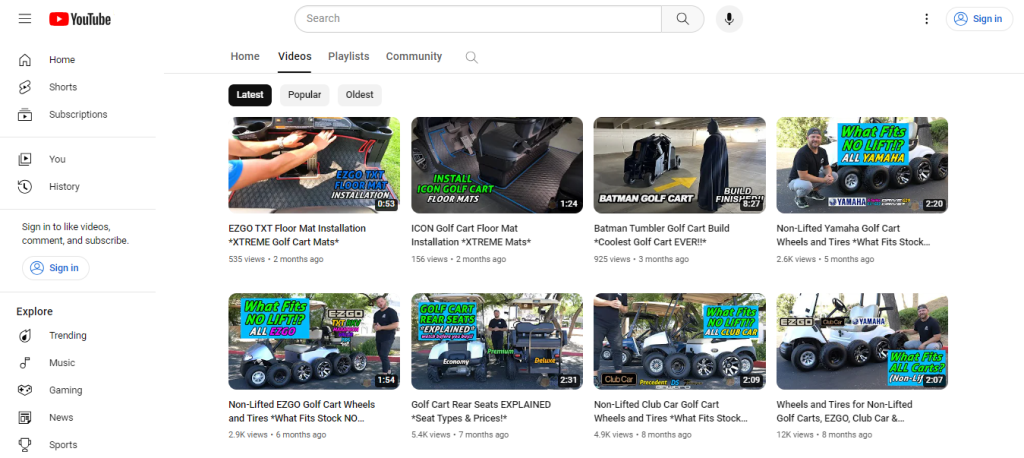
On platforms like Facebook, YouTube, Instagram, and X, the company can post tutorials, photos, and videos of accessories in action, and run contests or giveaways. Customers can also comment, ask questions, or even share their experiences with the products. They can also run targeted ads to reach specific demographics or interests.
Marketplaces
The golf cart accessories company can list its products on marketplaces like Amazon or eBay to reach a wider audience. Customers can discover their products while browsing for other related items. These platforms have built-in infrastructure for payments and shipping. This makes it easier to manage transactions and gain credibility.
Pop-up Shops & Experiential Retail
These are temporary retail spaces that the company can set up in high-traffic areas like golf tournaments or trade shows. People can see the accessories in person and maybe even try them out. Product demonstrations and special promotions at these spaces can attract and convert shoppers.
Click-and-Collect (BOPIS)
Customers can purchase golf cart accessories online and then pick them up from a physical location. like a store or a designated pickup point. This is convenient for customers who want to avoid shipping fees or receive their items quickly.
Virtual Try-On & Augmented Reality
The golf cart accessories company can implement virtual try-on or augmented reality features. This lets its customers see how different accessories would look on their golf carts. They can upload a photo of their cart or use their device’s camera to try on steering wheels, seat covers, or other accessories virtually.
Voice Commerce
The company can integrate with voice commerce platforms like Amazon Alexa or Google Assistant. Customers can simply say commands like “Order a new steering wheel cover for my golf cart” and complete their purchase using voice recognition technology.
7 Proven Benefits Of Omnichannel Retailing
Let’s take a look at 7 most compelling reasons why you should embrace omnichannel retailing.
Increased Sales
When you are everywhere your customers are, you sell more. It is that simple. You are reaching customers whether they prefer shopping in person or browsing from their homes. This increases your chances of making a sale.
Plus, with features like buy online and BOPIS, you make it convenient for customers to purchase. This encourages them to spend more.
Boosts Customer Loyalty
When you are consistent across all channels, you build trust. Imagine you see a product online, then visit the store to check it out in person. If the experience is seamless – same price, same availability, same friendly service – you will come back for more.
That builds loyalty. When you offer loyalty programs that work across all channels, customers feel valued and keep coming back for more.
Better Customer Data Collection
With omnichannel retailing, you gather data from multiple touchpoints. Every time a customer interacts with your brand – whether it is online, in-store, or through social media – you learn something about them. This data helps you customize your marketing efforts and drive more sales.
Enhanced Customer Experience
With omnichannel retailing, you are putting the customer at the center of everything. Your customer starts browsing for a product online and then visits the store to see it in person. With omnichannel, their experience stays consistent. Same product information, same prices, same promotions.
That makes for a smooth and satisfying shopping journey, whether they are online, in-store, or using a mobile app. When customers have a good experience, they will definitely come back for more.
More Personalized Marketing Strategies
Omnichannel retailing lets you get personal with your marketing. Because you are collecting data from multiple touchpoints – online, in-store, social media – you have a wealth of information about your customers. You know what they like, what they buy, and how they prefer to shop.
That means you can tailor your marketing messages to suit their preferences. Send them targeted promotions based on past purchases. You can recommend products or even offer special discounts on their birthday. It’s all about increasing customer engagement and making them feel seen and valued.
Improved Inventory Visibility & Management
With omnichannel retailing, you have a clear view of stock levels across all channels, in real-time. This means you can offer services like buying online, BOPIS, or ship-from-store, without worrying about disappointing customers with out-of-stock items.
Plus, you can optimize your inventory management to reduce overstocking and understocking. This helps save money and ensures you always have what your customers want.
Greater Brand Awareness & Reputation
When customers see your brand consistently across different platforms, it sticks in their minds. This builds trust and credibility over time. Plus, when you engage at different touchpoints, you have more opportunities to show your brand’s personality and values.
You are reinforcing what your brand stands for through helpful customer service interactions, engaging social media content, or memorable in-store experiences. When customers feel connected to your brand on a deeper level, they become loyal advocates who spread the word to their friends and family.
How To Build A Successful Omnichannel Retail Strategy
Building a successful omnichannel strategy is easier than you think. Let’s discuss 9 key steps you can take to make it happen.
Understand & Segment Your Customers
You need to know who your customers are and what they want. This starts with understanding their needs, preferences, and behaviors. Segment your customers based on factors like demographics, shopping habits, and interests.
Let’s take the example of a fitness and health supplements company. They segment their customers into different groups based on age, fitness goals, and dietary preferences.
This company identifies one segment as “Fitness Enthusiasts in Their 20s.” They know this group is interested in putting on mass and building muscles. So they run social media campaigns featuring workout supplements for this demographic.

Another segment is “Healthy Lifestyle Seekers Over 40,” who are more focused on maintaining overall wellness. For them, they send email newsletters for wellness products to create personalized experiences across all channels
Map The Customer Journey
Understand how the customers interact with your brand from the moment they become aware of it to the point of making a purchase and beyond. Identify touchpoints where customers engage with your brand. This includes browsing your website, visiting your store, or interacting with your social media accounts.
Take, for instance, a fashion retailer. They map out a customer’s journey like this:
- First, the customer sees an Instagram ad showing their latest collection.
- Intrigued, they click on the ad and are taken to the retailer’s website where they browse different items and add a few to their cart.
- However, before completing the purchase, the customer decides to visit the retailer’s physical store to try on the clothes in person.
- After trying them on and receiving helpful assistance from the store staff, they make a purchase.
- Later, they receive follow-up emails with styling tips and recommendations for future purchases.
This way, the company identifies touchpoints where they can engage with the customers and provide a seamless experience across channels. They also discover pain points like slow-loading webpages or long wait times in-store and address them.
Make All Touchpoints Shoppable
This means wherever your customers interact with your brand, they should be able to make a purchase. Think beyond just your website or physical stores. It could be your social media profiles, mobile apps, or even in-store kiosks.
For example, consider Chanel. They ensure that their Facebook ads and emails contain links to directly purchase products.
If a customer sees a nail polish shade they love on Instagram, they can click its link. That would take them straight to the product page where they can buy it without any hassle.
This way, they remove friction from the buying process. It becomes more convenient for customers to make a purchase wherever they encounter the brand.
Standardize Data Across Channels
This step is all about ensuring that the information you provide to your customers is consistent across all channels. It includes product information, inventory, pricing, and customer preferences. This becomes even more important for time-sensitive products and perishable items like fresh produce and medications. Otherwise, it can affect your customer’s well-being.
Imagine that you have a custom meal planner app like this one. You want to make sure that the nutritional information, ingredient lists, and portion sizes are the same whether someone is using the app on their phone, visiting your website, or interacting with your brand through social media.
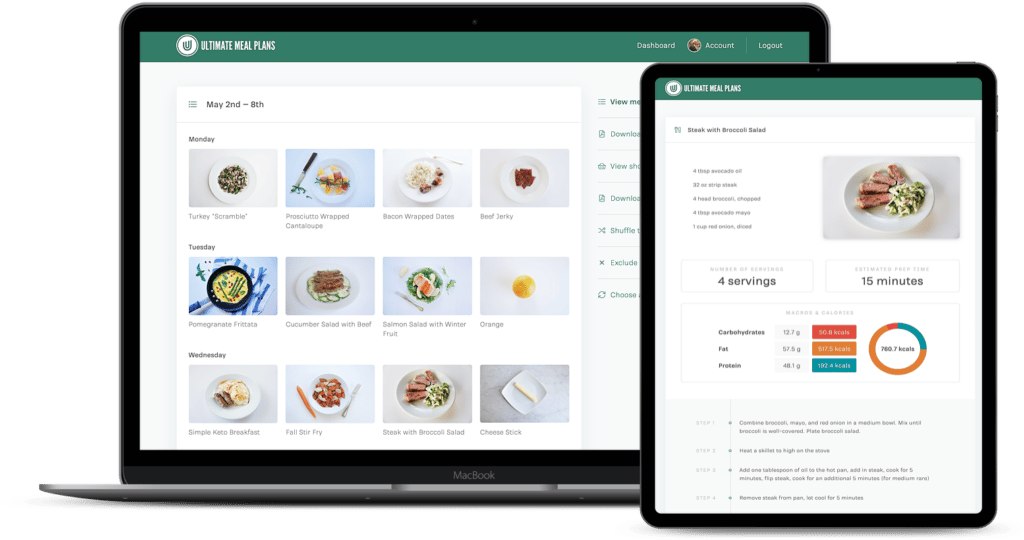
Why is this important? For consumable and short-shelf life products, inconsistent data has serious consequences for your customers’ health. Plus, consistency builds trust. If a customer sees different information, they are going to wonder which one is correct.
So standardize your data across all channels. Make sure everyone in your team is on the same page and that there are systems in place to keep everything up to date. It might seem like a small detail but it can make a big difference in how your customers perceive your brand.
Personalize Your Messaging
This step is all about tailoring your communication to each customer in a way that feels like it is just for them. They should think of it like having a conversation with someone who knows exactly what they like and need.
Take a furniture retailer, for example. Let’s say a customer is in the market for a new sofa. They browsed the retailer’s website, looking at different styles and colors. Now the company sends an email with sofa recommendations based on their browsing and search history.
They include personalized tips for styling the living room based on the furniture the customer has shown interest in.
But personalization goes beyond the words you use – it is also about the visuals. High-quality branding and graphics play a big role in creating a memorable and engaging experience.
Make sure your branding is consistent across all channels. This will help customers easily recognize your brand whether they are shopping online or in-store. Use the same colors, fonts, and imagery to create a cohesive brand identity.
Integrate Online & Offline Channels
Customers expect a smooth experience across both online and offline channels. Integrating your online and offline channels creates a unified shopping experience. This lets customers move easily between your website, mobile app, social media channels, and physical stores.
Take, for example, an electronics retailer with both brick-and-mortar stores and an online store. They make sure that their online and offline channels are synchronized. They also make it easy for customers to return or exchange items regardless of where they made the purchase.
Moreover, they also integrate digital technologies into their physical stores. Interactive displays and digital kiosks for placing orders enhance the shopping experience. They can promote in-store events or sales through website and social media channels, or vice versa.
Invest In Omnichannel Technologies & Tools
To succeed in omnichannel retail, you need the right tech and tools. So invest in software and systems for integration, quality control, and communication.
Let’s say you are selling food & beverages both online and in your physical stores. You invest in a robust inventory management system that syncs in real-time across all their channels. This means you always know when to restock. This prevents situations where a customer orders online only to find out later that the product is out of stock.
To streamline quality control procedures throughout the supply chain, you deploy sensors that track temperature during transportation. This ensures perishable goods arrive in optimal condition. It also builds trust with your customers, knowing your products will meet their expectations every time.
You also implement Mobile Point-of-Sale (mPOS) systems. It helps sales associates to process transactions anywhere. This reduces wait times and improves the overall shopping experience.
Train & Empower Your Staff
Your staff is the face of your brand, whether they are assisting customers in-store or responding to inquiries online. So they should be knowledgeable about your products.
Let’s say you are a household products retailer. Train your staff to demonstrate the proper use of kitchen gadgets or cleaning supplies. Teach them about the different channels you are using – online, in-store, social media, etc – so they know how they complement each other.
From the durability of a cookware set to the effectiveness of a particular cleaning solution, your employees should confidently answer any questions customers have.
Provide resources for professional development. This could include training sessions, workshops, or online courses to help staff stay up-to-date with the latest trends and technologies in retail and customer service.
Empower your staff to make decisions. Give them the authority to solve problems and make exceptions when necessary.
Measure & Refine Your Strategy
Once you implement your omnichannel retail strategy, the work doesn’t stop there. It is an ongoing process, so you have to continuously measure and refine your approach. Start by defining KPIs like:
- Sales revenue
- Website traffic
- Conversion rates
- Customer satisfaction scores
Use analytics tools to track these KPIs across all your channels. This will give you insights into how each channel is performing individually and how they are working together as part of your omnichannel strategy.
Regularly review your data to identify trends and areas for improvement. Are certain channels underperforming? Are there any pain points in the customer journey that need to be addressed?
Based on your findings, make adjustments to your strategy as needed. Reallocate resources to focus on high-performing channels and optimize your website for a better user experience.
Conclusion
If you are thinking of adopting omnichannel strategies, our advice is simple: start now! Start small if you have to, with online ordering or in-store pickup. The point is, get started. Because once you see the difference omnichannel can make for your business, you will wonder why you didn’t do it sooner.
But remember, a successful omnichannel strategy relies heavily on a robust and reliable web presence. For this, you need a reliable web hosting provider like UltaHost that offers a variety of web hosting plans to suit your business needs, from shared hosting for startups to dedicated servers for high-traffic websites.
Our plans are optimized for speed, security, and scalability so your online store can handle the increased demand that comes with omnichannel retailing.





